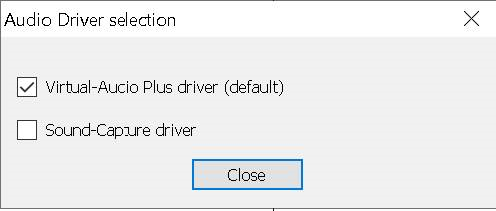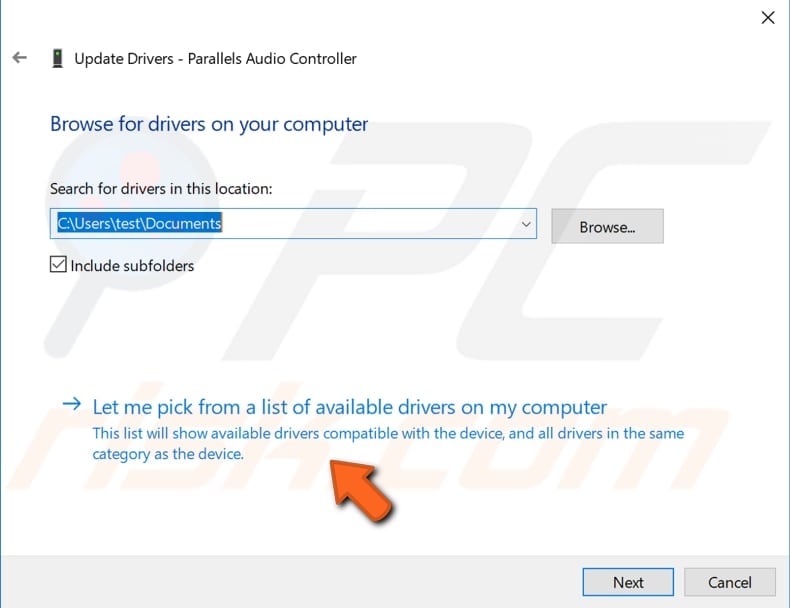
- #Screenflow audio driver install
- #Screenflow audio driver drivers
- #Screenflow audio driver driver
- #Screenflow audio driver software
And for gameplay recordings, set the desktop frame rate to the highest setting and the editing frame rate to 60 frames per second. ScreenFlow will automatically adjust your footage to match if you use different settings here between these two options, but it's a good idea to use 30 frames per second for both capture and editing, unless you're recording gameplay or have a very specific editing or recording situation. Here you can choose the frame rate that you wanna capture your screen or webcam with using this first dropdown, and then, what frame rate that you wanna edit your project with using the second dropdown. Clicking on the small open circle icon takes you over to the advanced recording settings.
#Screenflow audio driver install
I'll click cancel and install this offscreen. Just click the install button and follow the on screen instructions.
#Screenflow audio driver driver
Now, the first time you check the box to record computer audio, a dialogue box will open up letting you know that you may need to install a specific driver to record computer audio. You can also use this slider to make fine tune adjustments to the gain that'll get baked into your recordings. Now, for microphone sources, you can click the small gear icon and then control the pan of each microphone channel independently. ScreenFlow will record each of these inputs into separate tracks in the editor, giving you incredible control over your finished product. Now, from the new recording window, you can set what sources you wanna record, including the desktop of any monitor connected to your Mac, the screen of any iOS device or webcam, and the audio capture from a microphone or your computer, and each of these options is enabled by checking the box on the left hand side and then selecting the specific input source that you wanna record from the dropdown if it's available. I managed to just about eliminate it by drawing out the worst of it.- In this chapter, we're gonna take a deeper dive into the powerful recording capabilities of ScreenFlow. I had a look at the wave in Cubase, which does show it as quite a complex interference rather than a single squared event - might be a sign that it happened before some other signal processing which 'smeared' the effect. If I can think of any more, I'll add them. Test with mains connected & disconnected on the MBP.Ĭheck without going through the DBX (I doubt this will have any bearing, but you may as well be thorough.) Test hijack under different file-type outputs, wav vs mp3 etc Test without Hijack, just record into Quicktime.
#Screenflow audio driver drivers
Switch your Scarlett's input frequency in Audio Midi Setup, 44.1 or 48.Ĭheck you have latest hardware drivers for the Scarlett, & the latest macOS sub-version those drivers support. Try recording audio without the screen capture running, Try recording after a reboot, with nothing else running except what you need for the recording. It's not perfect, but tbh it can be good enough that no-one will ever spot it.

Quite often this will remove the tick entirely.
#Screenflow audio driver software
If your software allows it, you could actually manually draw a new line at that point, making a less sharp transition. In your DAW, you could probably zoom right into any tick visually & grab a screenshot of what the wave looks like at that exact point (dependant on audio software), which might give additional clues (or might not ). There is the possibility it's too 'consumer' & you might need to look at Loopback instead (or as well) to correct this.

Multi-device setups in Audio Midi Setup have a switch to determine which should be the clock master, but I'm not sure I've ever seen anything like that in Audio Hijack.

Whenever that generates a rapid zero crossing in the audio waveform (in effect, a big sudden step rather than a sine wave), it will tick.īuffer underrun happens when your machine is essentially "too busy to do all this at once".Īudio Hijack (& also most DAWs) has a setting to change the buffer size, sliding to the right increases latency by increasing buffer size, to the left decreases.Ĭlock sync issues tend to happen when one piece of software isn't running at exactly the same clock speed as another, so they constantly slip against each other. To over-simplify, both of those are reasons that the audio has to run to catch up all the time, meaning it occasionally skips a bit. There, that was easy to say… much harder to diagnose )


 0 kommentar(er)
0 kommentar(er)
